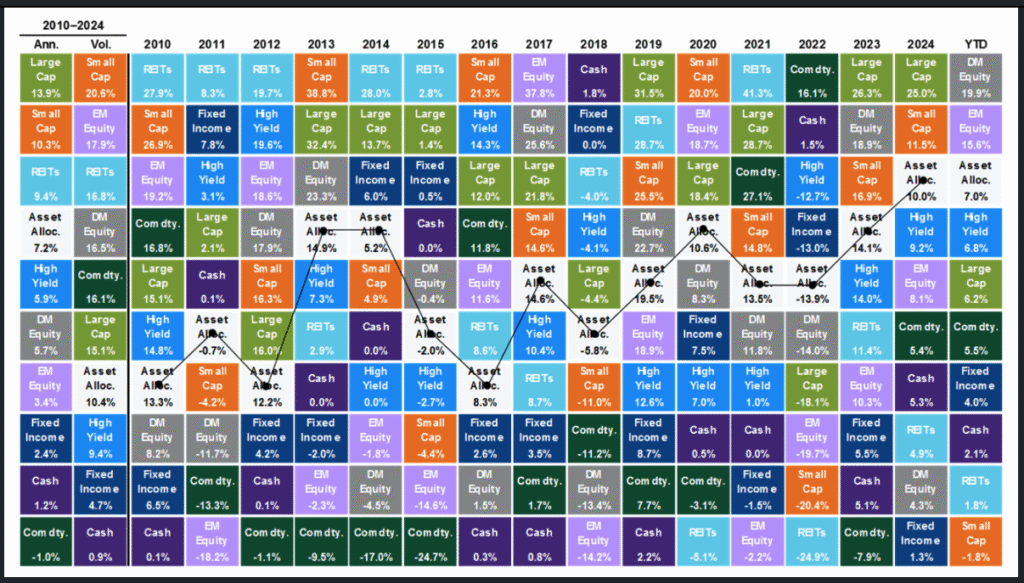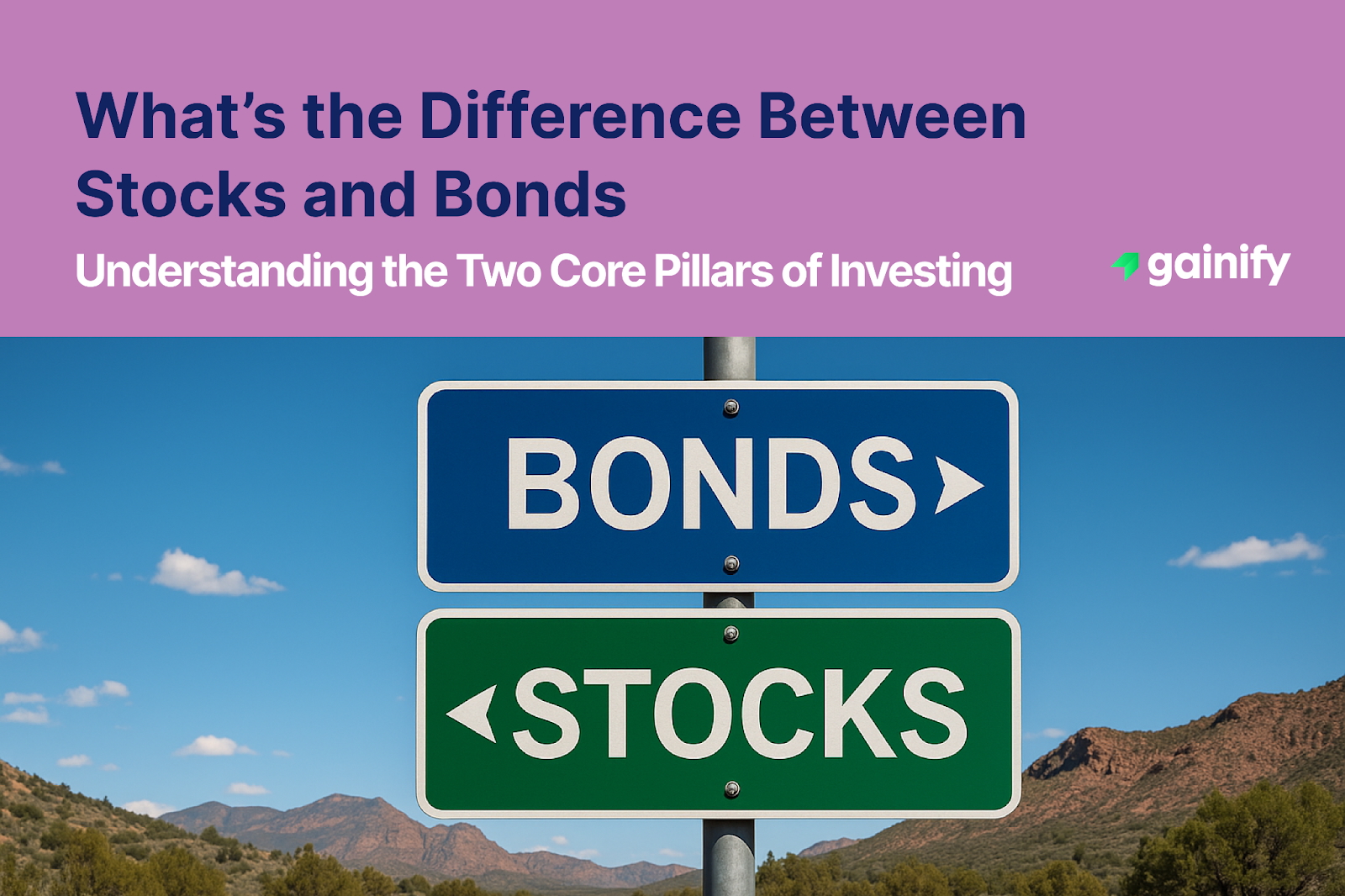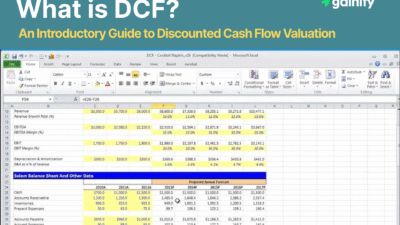Crafting a successful investment portfolio begins with a simple but essential question: Do you want to own a business or lend to one? This distinction lies at the heart of how capital markets function and forms the foundation of nearly every investment decision.
Stocks and bonds are the two principal asset classes available to investors. While both can serve as vehicles for growing wealth, they differ in purpose, structure, return potential, and risk exposure. Understanding how they work and how they complement one another is crucial to building a portfolio that balances growth, income, and resilience through changing market conditions.
- Stocks represent ownership in a company. When you purchase shares, you become a partial owner of the firm, entitled to a portion of its profits and, in some cases, voting rights.
- Bonds, in contrast, represent a lending arrangement. When you invest in bonds, you’re lending money to a corporation or government entity, which promises to pay you interest at regular intervals and return the principal on a specified maturity date.
While both instruments can play important roles in an investment strategy, they serve distinct purposes. Stocks offer the potential for high returns through capital appreciation, while bonds provide predictable income and help mitigate volatility.
In this guide on the difference between stocks and bonds, we’ll examine how each asset works, how they behave under different economic conditions, and how to integrate them strategically to create a well-diversified, resilient portfolio.
1. Stocks: Growth Through Ownership
What Are Stocks?
Stocks, or equities, are financial securities that represent a claim on a company’s assets and earnings. Publicly traded companies issue stock to raise capital for various business needs such as expansion, research, or debt repayment.
There are two main types:
- Common stock, which usually grants voting rights and the potential for capital gains and dividends.
- Preferred stock, which provides fixed dividend payments and priority over common shareholders in the event of liquidation, but generally lacks voting rights.
How Do Stocks Generate Returns?
- Earnings Growth
The primary driver of stock price appreciation is earnings growth. When a company increases its profits, its intrinsic value rises, and investors are typically willing to pay more for its shares. For example, if a company grows its earnings per share (EPS) from $1.00 to $1.10 and maintains a constant price-to-earnings (P/E) ratio of 20, its stock price would rise from $20 to $22. - Valuation Expansion
Stocks can also increase in value if the market assigns a higher valuation multiple, such as a higher P/E ratio. This often reflects optimism about the company’s future, favorable macroeconomic trends, or improving investor sentiment. However, valuation-driven gains can be short-lived if not supported by fundamentals. - Dividends
Many companies distribute a portion of their profits to shareholders through dividends. These regular payments provide a steady income stream and are especially appealing to income-focused investors. Dividend-paying companies are often seen as financially stable and committed to shareholder value.
What Makes Stocks Volatile?
Stock prices are influenced by a wide array of factors, including:
- Company-specific events: Earnings reports, leadership changes, competitive developments, and product launches.
- Macroeconomic indicators: Inflation rates, employment data, interest rates, and GDP growth.
- Investor sentiment: Market psychology, media coverage, and geopolitical developments.
Because of these dynamics, stocks are inherently more volatile than bonds. Managing this volatility through diversification, asset allocation, and appropriate time horizons is essential for long-term success.
2. Bonds: Stability Through Lending
What Are Bonds?
Bonds are debt instruments issued by governments, municipalities, or corporations to raise capital. When you buy a bond, you are effectively lending money to the issuer, who agrees to pay you regular interest (called a coupon) and repay the face value of the bond at maturity.
Bonds vary by:
- Issuer: Treasury, municipal, or corporate.
- Credit quality: Investment grade vs. high-yield.
- Maturity: Short, intermediate, or long-term.
- Interest structure: Fixed or floating rates.
How Do Bonds Generate Returns?
- Coupon Payments
Most bonds offer fixed interest payments. For example, a $1,000 bond with a 4% coupon yields $40 annually. These payments provide steady, predictable income, which is a key benefit for conservative investors. - Price Appreciation
Bond prices move inversely to interest rates. When rates decline, existing bonds with higher yields become more attractive, driving their prices up. Credit upgrades or improving issuer fundamentals can also raise bond prices in the secondary market.
Investors may hold bonds to maturity for income and capital return or trade them for capital gains.
Risks Facing Bondholders
- Interest Rate Risk: Rising interest rates reduce the value of existing bonds.
- Credit Risk: The possibility that the issuer will default.
- Inflation Risk: Inflation reduces the real value of fixed interest payments.
Understanding and managing these risks is essential to constructing a bond portfolio aligned with your goals and investment horizon.
3. Comparing Stocks and Bonds Side by Side
To fully appreciate how stocks and bonds fit into a portfolio, it’s important to compare them across multiple dimensions. Each asset serves a unique purpose, and understanding their structural differences can help investors align choices with specific goals such as growth, income, risk tolerance, and liquidity needs.
Feature | Stocks | Bonds |
Type | Ownership interest in a business | Lending instrument to a company or government |
Primary Goal | Capital appreciation over time | Income generation and capital preservation |
Return Sources | Price appreciation and dividends | Fixed interest (coupon) payments and price changes |
Income Predictability | Low to moderate; varies by company and business cycle | High if held to maturity; coupons are fixed and predictable |
Volatility | Generally high; sensitive to earnings, sentiment, and economic cycles | Lower; influenced by interest rates and credit conditions |
Risk Profile | Exposed to market, sector, and business-specific risk | Exposed to interest rate risk, credit risk, and inflation risk |
Liquidity | High for large-cap stocks; varies for smaller firms | High for Treasury bonds; varies for corporate and municipal bonds |
Maturity Date | None; investor chooses when to sell | Defined maturity date when principal is repaid |
Tax Considerations | Dividends may be taxed as income; capital gains subject to tax on sale | Municipal bond interest may be tax-free; other bonds taxed as ordinary income |
Use in Portfolio | Long-term growth, inflation protection, wealth accumulation | Income stability, downside protection, diversification anchor |
This expanded comparison highlights how stocks and bonds differ not just in structure, but also in the roles they play in a well-diversified portfolio. Stocks provide the engine for long-term growth and can significantly outpace inflation over time. Bonds, on the other hand, deliver consistent income, offer downside protection during turbulent markets, and can help balance the overall volatility of an investor’s holdings.
The real power of a diversified portfolio lies in combining both assets thoughtfully, allowing one to offset the other’s weaknesses and contribute differently across various market environments.
This comparison reveals that stocks and bonds serve fundamentally different purposes in a portfolio. Stocks are geared toward long-term capital growth, while bonds are designed for income generation and risk mitigation.
The challenge for investors is finding the right balance between these objectives based on their goals, risk tolerance, and time horizon. Each asset class complements the other, helping to smooth portfolio returns over time.
4. Historical Cases: When Bonds Outperformed Stocks
While equities typically outperform over the long term, it’s important to understand that markets move in cycles, and each asset class has its moment. Bonds can outperform stocks during specific economic environments, especially when capital preservation, not growth, becomes the market’s priority. Let’s explore this dynamic more deeply through historical examples. These aren’t cherry-picked events, but structural shifts where investor psychology, policy response, and financial system behavior aligned in favor of bonds.
Case A: Global Financial Crisis (2008)
- Backdrop: The collapse of Lehman Brothers and the housing market caused a liquidity crisis. Equity markets fell by nearly 40%.
- Bond Response: U.S. Treasuries gained significantly. As panic grew, investors flocked to safety. Yields dropped and prices rose, with long-term government bonds returning over 20%.
- Key Insight: In a deflationary crisis, the flight to quality boosts government bond prices. They offer a cushion when equities are under severe stress.
Case B: Tech Bubble Collapse (2000–2002)
- Backdrop: Excessive speculation in dot-com stocks ended in collapse. The Nasdaq lost over 75% of its value.
- Bond Response: Investment-grade bonds provided steady income and limited drawdowns, with annual returns of 8-10%.
- Key Insight: Even when specific sectors crash, high-quality bonds deliver consistent income and act as capital stabilizers.
Case C: Yield Curve Inversion (2019)
- Backdrop: Market participants feared a recession as the yield curve inverted. Stock market growth slowed, and volatility spiked.
- Bond Response: Short-term Treasuries performed well, offering solid returns with minimal risk.
- Key Insight: Understanding the shape of the yield curve can help investors position defensively with bonds when equity momentum stalls.
Each of these scenarios illustrates a different role that bonds can play-from capital preservation to steady income to tactical protection-underscoring why they remain essential in most diversified portfolios.

5. Institutional Allocation Strategies: How the Pros Do It
It’s one thing to know how stocks and bonds behave. It’s another to turn that knowledge into a structured, rules-based investment strategy. Large institutions-pension funds, university endowments, sovereign wealth funds-have to deliver consistent results over decades. They use tested frameworks to manage allocation, reduce behavioral risk, and adapt to changing markets. These approaches can guide individual investors too, especially those seeking discipline and long-term alignment with goals.
Balanced Allocation (50/50)
- This framework assigns equal weight to stocks and bonds.
- Rebalancing keeps the portfolio aligned with its risk profile, forcing investors to trim outperformers and buy lagging assets.
- It’s a simple but powerful approach for those seeking moderate growth with limited volatility.
Growth-Oriented Allocation (90/10)
- Aimed at younger investors, this strategy maximizes equity exposure for long-term capital appreciation.
- The small bond allocation acts as a behavioral buffer and liquidity source during downturns.
- Best suited for those with high risk tolerance and long investment horizons.
Risk-Parity Allocation
- Risk parity balances the portfolio by targeting equal risk contribution from each asset class, not equal capital weight.
- Because stocks are more volatile, the strategy often results in a higher allocation to bonds.
- Frequently used by institutional investors looking to optimize risk-adjusted returns.
Liability-Driven Investing (LDI)
- LDI is used by institutions and retirees to align bond maturities with future liabilities.
- For example, a retiree might purchase a ladder of bonds maturing annually to match withdrawal needs.
- This approach reduces reinvestment risk and improves predictability of cash flows.
These strategies demonstrate that asset allocation is not just about return optimization, it’s also about behavior management, risk control, and aligning investments with future needs.
6. Common Pitfalls and How to Avoid Them
Even the best-designed portfolio can fail if an investor doesn’t stick with it. Behavioral mistakes often outweigh poor asset choices in derailing long-term plans. Here’s how to avoid the most common traps:
Mistake 1: Chasing Performance
- Investors often flock to whatever asset or sector has recently outperformed.
- This usually results in buying high and selling low.
- Fix: use a disciplined rebalancing strategy to trim winners and add to laggards.
Mistake 2: Ignoring Inflation
- Keeping too much money in low-yield bonds or cash may feel safe but can result in a loss of purchasing power over time.
- Fix: incorporate inflation-sensitive assets like equities or Treasury Inflation-Protected Securities (TIPS).
Mistake 3: Panic Selling
- Emotional decisions during market downturns often lead to selling at the worst possible time.
- Fix: automate contributions and rebalancing. Avoid looking at your portfolio too frequently if it causes anxiety.
Mistake 4: Misunderstanding Duration
- Many investors don’t realize that long-term bonds can lose substantial value when rates rise.
- Fix: align bond durations with your investment timeline and risk appetite.
Successful investing requires emotional discipline just as much as financial knowledge. Recognizing these pitfalls and proactively building systems to avoid them can dramatically improve outcomes.
Final Thoughts: Building a Resilient Investment Foundation
Stocks and bonds are not in competition. They are complementary tools in the pursuit of long-term financial success. Each asset class plays a unique and vital role: stocks drive growth by capturing the upside of economic expansion, while bonds provide stability, income, and protection during periods of uncertainty or market stress.
A resilient investment strategy is not built on predictions, but on preparation. By understanding the mechanics and behavior of both stocks and bonds, investors can construct portfolios that are not only diversified, but also aligned with their personal risk tolerance, time horizon, and financial objectives.
The true strength of a balanced portfolio lies in its ability to adapt across market cycles, participating in upside opportunities while remaining anchored during volatility. This balance helps smooth returns, reduce emotional decision-making, and increase the likelihood of achieving long-term goals.
Ultimately, successful investing isn’t about outsmarting the market day to day. It’s about crafting a durable plan, staying disciplined through both optimism and fear, and letting time and compounding do their work.
Be deliberate. Stay invested. Build with purpose.




